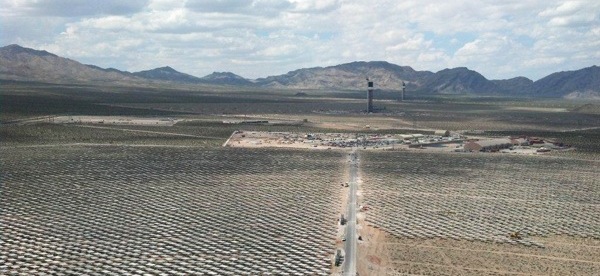Remote deserts would seem to be the ideal place for Big Solar — were it only that simple
Can threatened tortoises and utility-scale solar plants coexist in the California desert? Since the solar rush began a few years ago, results have been discouraging. But an ambitious new plan aims to strike a long-lasting compromise. Northern Californians get a chance to weigh in on the process at a public meeting in Sacramento on Wednesday, September 5.

The Desert Renewable Energy Conservation Plan — just call it the DRECP — is designed to establish habitat protection guidelines for dozens of species, not just the elusive desert tortoise, across an incredible 22.5 million acres of desert caught in the crossfire between conservation and clean energy.
It’s already being called the nation’s largest-ever Habitat Conservation Plan (a tool created by the federal Endangered Species Act of 1973), and the first to be framed around renewable-energy development. Habitat conservation plans work by addressing mitigation and conservation needs up front and requiring developers to pay into them — rather than the scattershot, reactionary approach employed in the desert to date.
No matter how the DRECP turns out, its implications are likely to be enormous — even beyond California, where it could set an example for other states pursuing large-scale clean-energy development in remote areas.
And yet the plan has flown quietly under the radar since the planning process began in March 2009 with a diverse, often contentious group of stakeholders. But next week at the California Energy Commission’s offices in Sacramento, members of the public can listen in and offer comment as state and local government agencies, renewable-energy developers, environmental groups, and land-use attorneys debate the ins and outs of habitat conservation on public land. The federal Bureau of Land Management owns more than 11 million acres in the California desert.
According to DRECP Director Dave Harlow, the plan relies on sophisticated, state-of-the-art species-distribution models and tools to account for a wide variety of desert plant and animal species, including 36 plants, 20 birds, ten mammals, seven amphibians and reptiles, and even four fish.
[module align=”left” width=”half” type=”pull-quote”]“It’s kind of our only chance for the desert at this point.”[/module]
But April Sall of Southern California environmental group The Wildlands Conservancy, one of the numerous stakeholders, is worried that everything may not come together as planned. She claims that industry representatives have been lobbying to keep land open for development, and the project’s rapid timeline — a final draft is due next spring — may not allow sufficient time to fill in knowledge gaps about habitat and species distribution in certain areas of the desert.
“I’m hopeful that this will work, but at this time I have a bit of concern,” she said. “It’s kind of our only chance for the desert at this point.”
Barbara Boyle, the Sierra Club’s senior lead for energy issues, who has also been participating in the planning process, shared Sall’s concerns. “They are moving it pretty quickly, and that makes us nervous. They are on a very fast track.”
In addition to conservation considerations, the DRECP will also help determine how many new transmission lines can be built in the California desert, Boyle said, and ultimately how much the state will rely on remote, large-scale renewable energy to meet its Renewable Portfolio Standard. “There are some really important policy choices here that are being made that are going to affect things over the long-term,” she said. “These are huge policy issues that are all wrapped up this in plan.”
A draft version of the DRECP will arrive in December.
